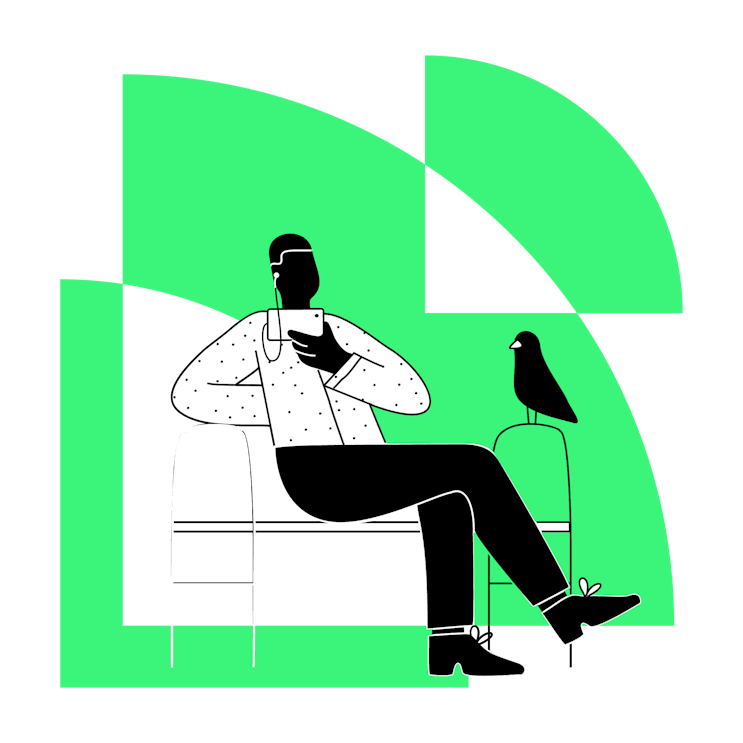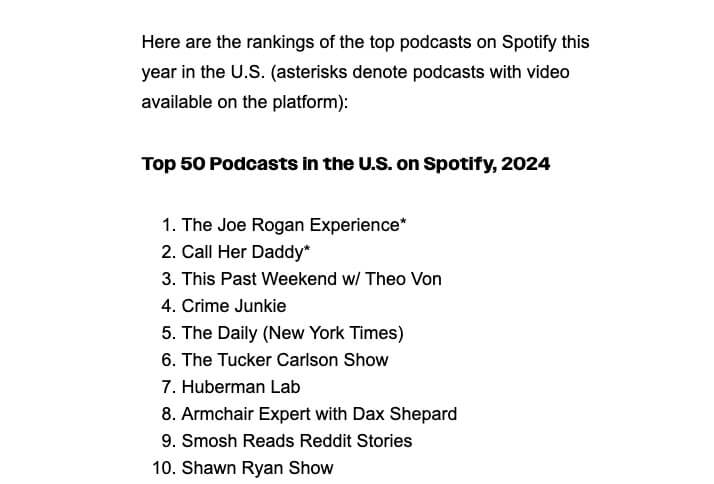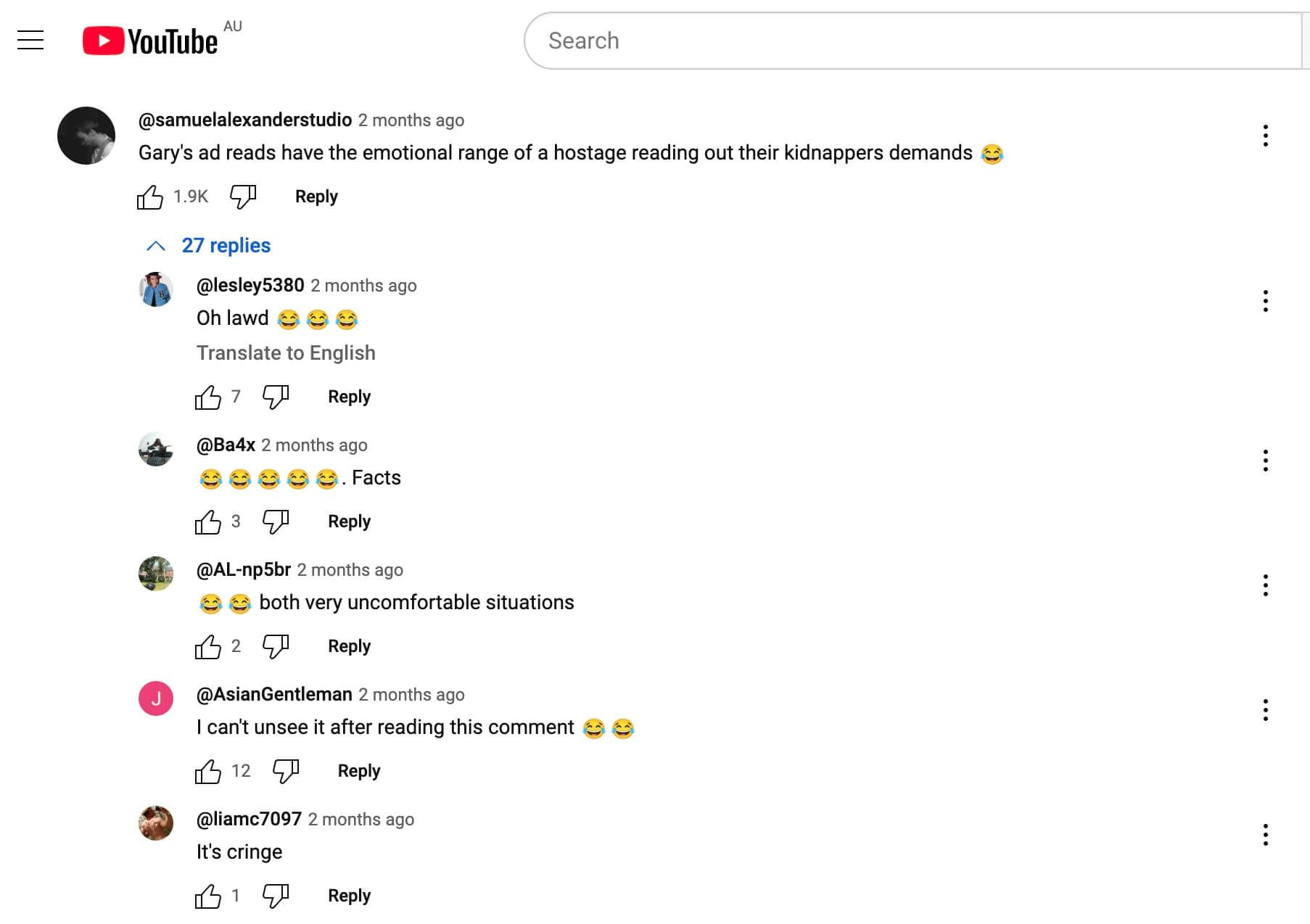
Video podcasts and podcast advertising in 2025
Last updated 05.02.25
‘Video Podcasts Will Be Big in 2025’. This seems to be the trendy thing for podcast experts to be talking about so far this year, despite it being nothing new.
However, it seems that 2025 will be the year brands and podcasters actually start to take it seriously which is a good thing for the industry. The podcast recording itself could become the central point for an entire content marketing strategy for creators.
At Earmax, we're seeing how this shift could affect the way brands do podcast advertising.
The wider content opportunity for brands
You can’t scroll more than 5 vids on TikTok without seeing someone pop up in a podcast studio. The Gen Z Podcast Listener Report from 2023 found 80% of Gen Z respondents (aged 13-24) find new podcasts on TikTok.
That’s because one video podcast can provide multiple clips for social channels that significantly increase discovery and reach. Suddenly you’ve got podcast related content across all the main social media platforms and audiences watching full episodes on YouTube.
This is great for listeners and creators, but it also provides opportunities for brands to invest in authentic partnerships with podcasters and their audiences. We’re already seeing how different networks are reacting and changing their positioning.
For example Acast have updated their strapline to ‘Podcast-First, Not Only’. They can speak directly to the host and say ‘hey our client also wants to sponsor your YouTube episodes and social promo posts’. A little more heavy lifting but easily done and direct benefit to both brand and podcaster.
There is clearly huge potential and appetite now for extending ads across video formats, but are these video podcasts going to take over?
Audio-only podcasts aren’t going anywhere
Just because video podcasts on Spotify and consumption through YouTube is still growing doesn’t mean audio podcasts are decreasing. They will still be there and will still retain those same audiences.
These audio episodes can also still be consumed through YouTube and it’s worth noting that video podcasts aren’t necessarily being watched the whole way through even if it’s got a tonne of ‘views’.
Moreover, video consumption figures are massively skewed by the behemoths like Joe Rogan, Call Her Daddy and DOAC. They’ve had a YouTube presence and video strategy for years and account for a massive proportion of podcast ‘viewers’.

Video lends itself to these kinds of conversational podcasts where audiences have a real affinity to the hosts and guests and want to see their facial expressions and body language throughout the show. The Joe Rogan x Donald Trump podcast episode was a much more engaging watch than a listen.
However, plenty of podcasts are far more engaging in audio. Especially well produced ones like Real Dictators and Short History Of. They elicit mental pictures that help transport the listener to the events being spoken about.
Then there’s one of podcasting’s biggest categories, True Crime. Do we really think we’re going to start having full productions of every True Crime story published on Spotify and YouTube? We already have enough of this on Netflix.
The reason it’s so popular is because listeners enjoy creating these scenes in their minds, where the tension is even greater.
Lastly, there are zillions of podcasts out there that have hosts who simply don’t have the time or money to produce video episodes and all the promotional assets that go with it every week.
Does that make their audience any less valuable or any less engaged? Definitely not.
YouTube & Spotify – Video consumption is just an option
It’s also important to take the latest data on video podcast audiences with a pinch of salt because YouTube & Spotify are also used for audio-only consumption.
Last year I watched more YouTube videos on my Smart TV than ever before. Now I have a YouTube Premium account, so I listen to podcasts and music through YouTube, but mostly without watching the video.
I’ve also listened to podcasts on Spotify that are video first. Maybe I’ll click on and watch for a bit as I want to see the guest, eg the Steven Bartlett x Boris Johnson interview, but as I get off the train and walk to the office I consume the rest of the episode through my headphones only.
And I'm not the only one.
I’m currently working with multiple independent podcasters that now host their podcasts on ‘Spotify for Creators’ and when you look at the stats it will tell you ‘of the 1,356 hours people spent playing this episode, 436 hours were spent watching the video. That’s 32% of this episode’s play time.’
From what I’ve seen so far the video watch time is usually somewhere between 25-35% per episode. A large chunk of the overall podcast downloads reported will also have been consumed through Apple Podcasts in audio form.
All that being said, it’s clear that video podcasts will continue to grow and both Spotify and YouTube see it as a central part of their strategy to increase their paid subscribers and build out their podcast offering.
Do advertisers need to change their approach?
Both YouTube and Spotify are encouraging creators to create video-first podcasts, with a long term strategy to increase paid subscriptions and give them more control over the advertising.
There are already changes in how ads are bought and served across Spotify, but you can DM me if you want to know more about those.
Yet the vast majority of podcasts out there are still hosted on agnostic platforms like Omny (Triton), Megaphone (Spotify), Acast or Buzzsprout, where Digital Ad Insertion (DAI) is still possible and ads will still be served on shows listened to through Spotify.
So whilst brands don’t currently need to worry too much about video disrupting their existing audio strategy, they definitely need a plan for how it will become an extension.
Brands and Podcasters should feel positive about the shift as it’s an opportunity to retain more control of the baked-in host reads they do on YouTube or Spotify Video.
A worry for some in the industry may be that as podcasters' video offerings evolve, they may commit to either Spotify or YouTube, and the buying of shows will become more fragmented, so more time consuming to sell for networks and media agencies.
If you buy programmatically and your remit is reach, then this also may present some barriers. As far as I know you can’t buy baked-in ads through DSP platforms so if these shows are removed, there will be more competition for less inventory, served in worse ad slots with less control.
However, for the brands actually spending the money and the podcasters actually making the content, it’s a great thing.
But how will it affect the ad creatives themselves?
‘Host-Endorsed’ trumps ‘Host-Read’
If you don’t have Spotify or YouTube Premium, you’re forced to watch / listen to the ads you get served by the platform.
However, even for the Premium users you’ll still see/hear some ads from the host. This is also the case for YouTube-only Vloggers. Think Better Help, Manscaped etc.
These host-read ads are ‘baked in’ to the episode, but with video podcasts it's even more crucial to get the sponsorship right.
If you see the host's eyes flickering as they read a marketer's script off a screen, for a brand/product that isn't quite aligned, it's obvious for the audience they don't really care.
If a brand stands any chance of their ad actually being watched they need to work with hosts that can draw on personal experiences and make it a 'host-endorsed' ad rather than 'host-read' ad. See our article on this here.
I watched the Ricky Gervais episode of The Overlap recently (2.8M views) and found the top comment sums this up well!

Summary
There's no doubt of the growth of video podcasts and the continued evolution will be a big part of podcasting’s future. For me it’s a great thing.
It will bring more audiences to the channel as a whole and more opportunities for creators to connect suitable brands directly to their listeners, without cannibalising shows set up specifically for audio.
Whilst there may be some barriers in the buying of the media for time-poor marketers, there is a massive opportunity for brands that want to invest in the channel properly, building long-term, authentic partnerships with hosts, and emotional connections to their listeners.